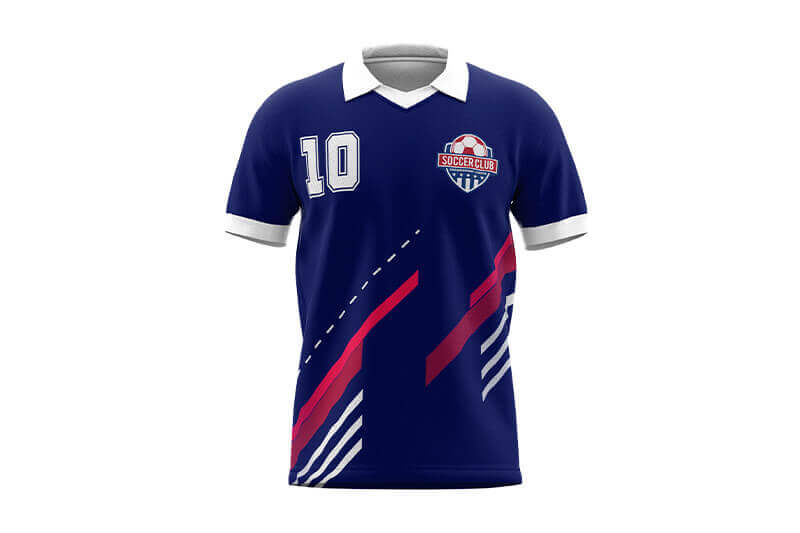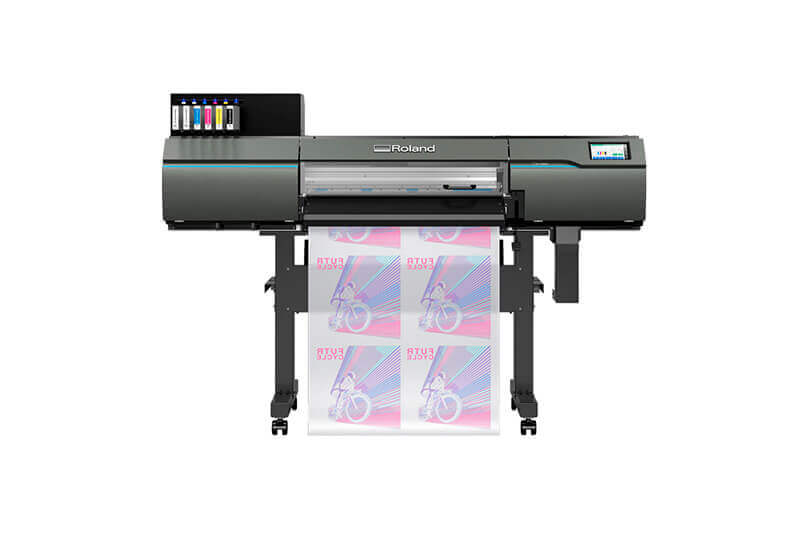In the past few years, there’s been a dramatic transition in the way custom apparel is being printed as many producers switch to using direct-to-film, or DTF, printing, alongside or instead of more traditional technologies such as dye-sublimation and screen printing.
DTF printing allows users to cost-effectively produce vibrant, durable designs for customized apparel on-demand. As a result, more small businesses and shop owners are bringing DTF capability in-house to better satisfy their customers and diversify their revenue streams.
We talked with Roland DGA Application Specialist Mike Davis about what to consider when purchasing a DTF solution, and how new users and experienced shop owners alike can use this technology to maximize their efficiency, productivity, and profitability.

Why are so many small businesses and shops adding DTF production?
Mike Davis: Creators and print shop owners that don’t currently offer in-house custom apparel
are realizing that they’re missing out on profits… and possibly customers. They may be choosing not to
offer apparel, or they may be sending it out. Outsourcing brings its own challenges, including a reduced ability to
control timing and quality, and of course lower profitability.
While shop owners may want to offer apparel in-house, in many cases, their demand level may not be high enough to
support an investment in the equipment, supplies, and training needed for traditional options like screen printing or
dye-sublimation.
DTF printing technology is an efficient, cost-effective, and easy-to-use technology – one that requires essentially the same skill level as printing decals. For shops that are printing and transferring 50-75 shirts a day, a desktop DTF printer like the VersaSTUDIO BY-20 is a great option.
Shops that produce a larger volume of apparel or that want to sell gang sheets may need to consider a production DTF machine such as the TY-300 that can print larger quantities more rapidly.

What kind of ROI can DTF users anticipate?
A shop owner’s ROI will vary depending on what they are printing, however, on average, they should be able to net close to $500 - $1,000 profit per hour with a desktop DTF machine like the BY-20. With a larger and more powerful DTF printer like the TY-300, users can potentially generate over $4,500 profit per hour.
Gang sheets printed on the BY-20 desktop DTF printer with several images on them can produce at least $100 in profit per sheet, if the user is selling the transfer on a completed blank item. As an example: Say a sports team would like some apparel. On one gang sheet measuring 16” x 20”, which prints in about 10 minutes, you can provide graphics for a player’s jersey with a name and number on the back and logo on the front, six 4” x 4” pocket logos for coaches’ shirts, and three 3” x 3” logos for players’ hats.
You can sell these items for a considerable profit. A typical player’s jersey with front and back graphics is valued at about $25. Coaches’ dry-fit shirts with a left chest graphic also go for about $25. Hats with a graphic can be sold for about $12 each.
Additionally, many shop owners these days are selling gang sheets alone, saving time, labor costs, and the inventory expense of applying graphics to apparel in-house. If you are selling gang sheets, the wholesale price would likely be up to $12 a sheet.
These are margins that can really contribute to your bottom line.

What should shop owners consider when evaluating DTF equipment?
Here are five important considerations for evaluating DTF systems:
Production capability – How much can the printer produce in a day? Shops that need to produce 50-75 shirts a day, on average, should consider a desktop DTF machine. Those who need higher levels of output for retail or wholesale should consider a production DTF printer. Most brand-name production machines print one roll of film, which is approximately 328 feet, in a day.
Power requirements – While DTF printers usually have a very low power draw, the shaker oven
may require 220V service. Your dealer will be able to walk you through each specific device’s power
requirements.
Space needs – A desktop device like the Roland DG VersaSTUDIO BY-20 DTF printer requires only
a 2’ x 4’ tabletop to accommodate the printer, supplies, and a laptop. Most production systems have
substantially larger footprints. The TY-300 with a heater/shaker unit, for example, needs a space that’s about
9’ x 13’.
Running costs – Maintenance and running costs for DTF printers can vary widely. The TY-300,
for example, offers greater ink efficiency and fewer maintenance requirements than printers from other manufacturers,
resulting in lower overall running costs.
Reliability – Since printers are often critical to a business’s profitability, I recommend buying a name-brand DTF printer that comes with technical support and a manufacturer’s warranty. Printers made by some overseas manufacturers and refurbished printers – even those resold in the U.S. – often don’t provide the support, software, or replacement parts that may be needed over the lifetime of your printer. Roland DGA, on the other hand, backs its printers with a warranty and plenty of support through its network of dealers and technicians.

What types of material can DTF prints be applied to?
DTF prints provide tremendous versatility. They can be used on most textiles, including natural and synthetic fabrics. Specifically, they can be applied to Tri blends (fabrics made from cotton, rayon, and polyester) as well as to 100% polyester, 100% cotton, cotton canvas, twill, and denim.
Also, unlike dye-sublimation, DTF prints can be applied to dark fabrics.

How durable are DTF prints? Can they be stored for later use?
DTF transfers, when properly applied, are very durable and have been found to last 50 or more washes. DTF prints can also be stored for later use. Most people can print them, put them aside, and transfer them six months later. I have personally transferred prints that are a year old with good results. The caveat is that they have to be produced properly and stored properly.
How sustainable is DTF production?
DTF is a great option for sustainability. Using DTF, shop owners can print on demand or transfer on demand, which vastly reduces waste and extra inventory. Most shop owners can simply stock apparel blanks and wait for on-demand requests or print several transfers that are ready to apply.
What do you see ahead for the DTF market?
This technology is where the market is going. More and more PSPs are adding DTF capability, and those that aren’t are outsourcing to other shops that produce DTF prints. Screen printers are also adding DTF for short runs and sampling. Today’s DTF printers are more intuitive and efficient than ever, providing users with versatile, vibrant, on-demand production capability.
Create Value with Direct Printing
Introducing VersaSTUDIO from Roland DG - a comprehensive solution that enables anyone to easily print directly onto a wide variety of materials.




